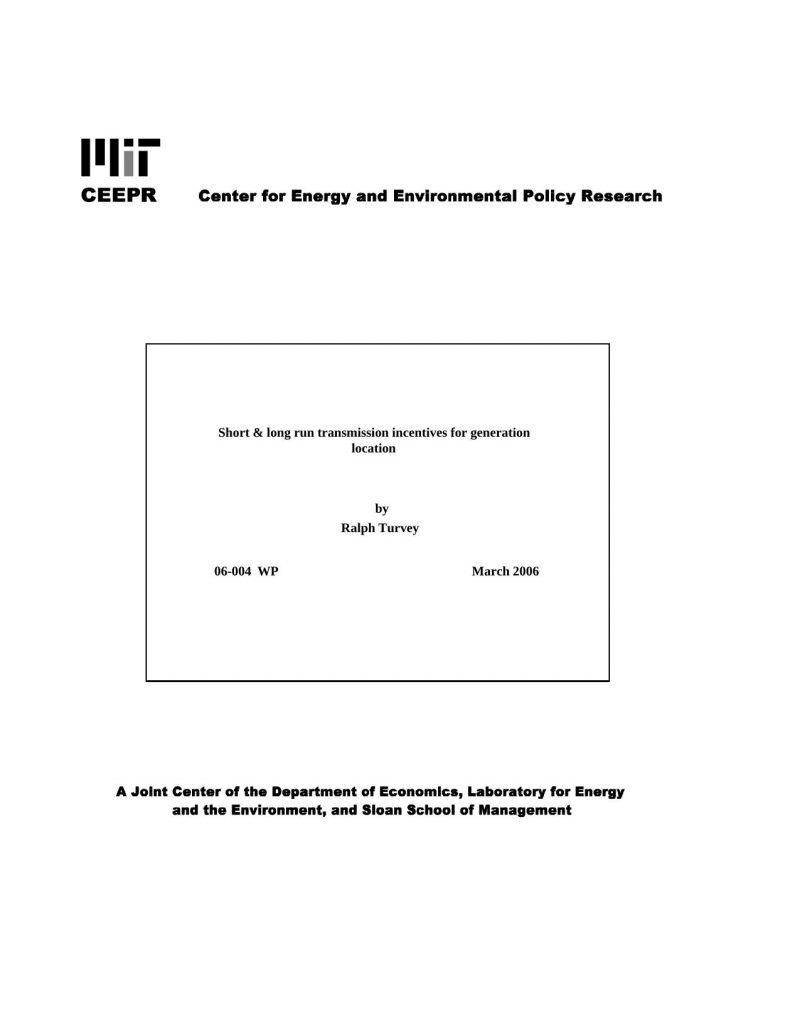Short & Long Run Transmission Incentives for Generation Location
Ralph Turvey
06-Mar
This paper is about one aspect of Britain’s electricity trading system, its advantages and its weaknesses concerning the incentives it provides or fails to provide for the location of generation. (Similar considerations apply to the location of loads, though these are less responsive to locational influences exerted by the trading system). The optimal location of generation in the short-run is a matter of determining the unit commitment and dispatch of the existing generation park so as to minimise the cost of generation hour by hour, subject to security constraints and taking account of transmission losses. In the long-run, choices of the locational pattern of new plant construction and of the decommissioning of old plant should be influenced by their effects upon the cost of the transmission investment that they entail. In systems with a gross pool, such as in New York, Ireland and New Zealand, there is a central dispatch. This, taking account of transmission losses and constraints, can produce locational marginal prices. Expectations concerning their future levels provide signals relevant to the location of new generation. Thus both in the short-run and in the long-run these systems provide locational incentives. In some of them, where the long-run incentives to investment provided by the uncertain prospect of future price spikes are deemed insufficient, capacity requirements are imposed upon (what in Britain are called) “suppliers”. These too can embody a locational element, as in the LICAP arrangements in New York and proposed for New England.
In the British system, there is a net pool, and two cashout prices rather than one emerge from the Balancing Mechanism. This is Britain’s version of what is elsewhere called the spot market, regulation market or real time market. Unit commitment is left to the generators, while National Grid, as system operator re-dispatches so as to preserve balance and to deal with transmission constraints. For the latter purpose, it constrains on here and constrains off there (though such actions may serve other purposes too). This costs it money, providing the occasion for it to weigh up the operating cost of dealing with constraints against the capital cost of removing them. But locational prices do not emerge from this process and no account is taken of locational differences in marginal losses. These are two defects of the short-run locational incentives provided by the British system. On the other hand, the British system scores highly with respect to long-run locational incentives. Instead of providing these by participants’ expectations of future locational differences in energy prices, and maybe capacity prices, Britain provides them through locational differences in the transmission costs borne by generators. National Grid’s Transmission Use of System Charges vary locationally to reflect the results of an “Incremental Cost” analysis. But although these may be roughly right, National Grid’s approach is imperfect, even though it has evolved to meet some past criticism. This paper points to its remaining defects after first tackling the short-run issue of the treatment of losses.



